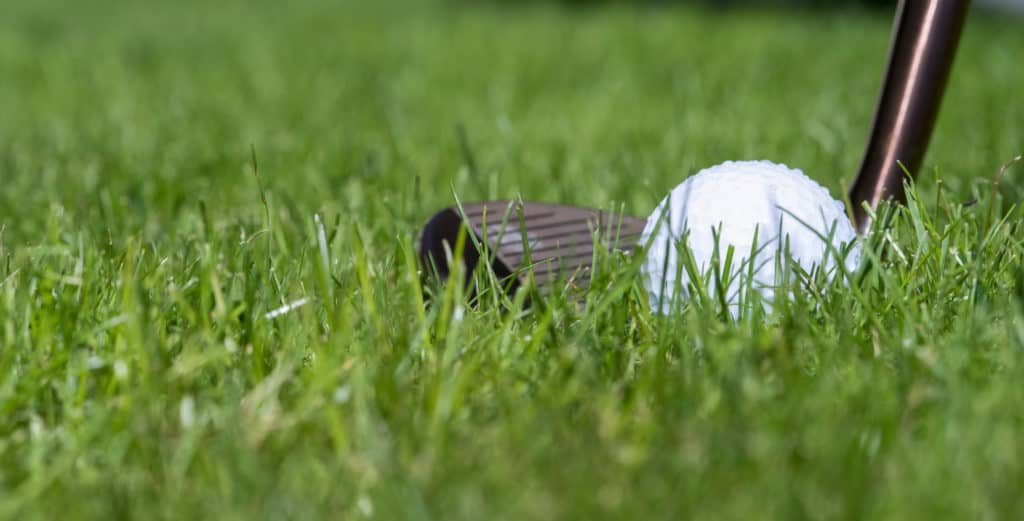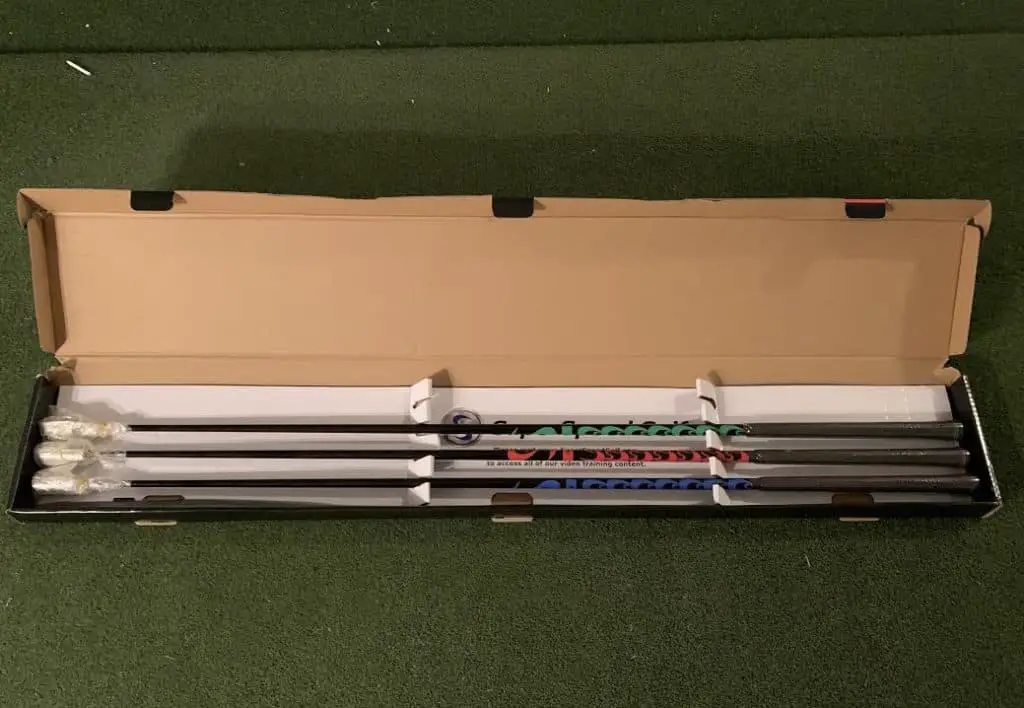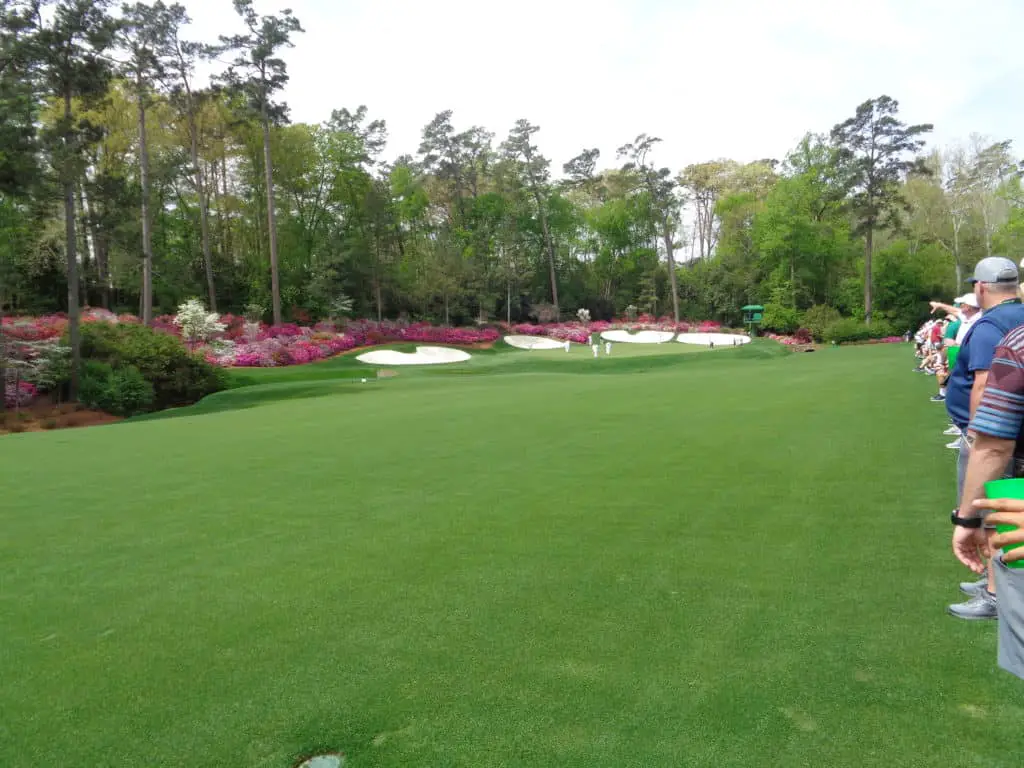The pitching wedge is typically a 48 degree club and a sand wedge is typically 56 degrees. Oftentimes there is a 4 degree gap between clubs, but this 8 degree gap can cause issues. Many golfers will select to utilize a gap wedge (52 degrees) between the pitching wedge and the sand wedge.
Golf can be a complicated game especially for those new to the game who have many different questions. A question we often hear is do I need a pitching wedge and a sand wedge.
The rules of golf give you the opportunity to have up to 14, but which clubs should you select? When you get to the wedges, there are many different options on how to set up your golf bag.
Keep in mind that 65% of the shots in golf come from within 100 yards. So many golfers pay attention to what driver they have and spend hours hitting drivers at the driving range trying to find the secret to their game improvement.
However, I believe greater attention should be given to the clubs that you hit from around 125 yards and in.
These are the scoring opportunities in golf and must be taken advantage of to get your game to the next level, regardless of what level you are currently at!

Pitching Wedge vs Sand Wedge – Overview
Do I need a pitching wedge and a sand wedge?
Yes, in fact I would recommend a pitching wedge, gap wedge, sand wedge and a lob wedge. You would then have clubs that are 48, 52, 56 and 60 degrees in loft.
Our reason for this recommendation is that 65% of shots in golf happen inside of 100 yards. Practicing and preparing to hit shots within this yardage without major gaps in lofts will help you score better.
Is a sand wedge only used out of the sand?
No, the sand wedge will be utilized for full shots, sand shots and chip shots around the green. The standard loft of 56 degrees allows golfers a full range of shots that can be hit.
The sand wedge is a very versatile club that provides the golfer with many different options. Many golfer will select to use their sand wedge as their primary club that they hit the majority of their chip shots with.

How far should I hit each of my wedges?
Your wedges will be used from shots from around 125 yards and less.
Swing speed will vary from golfer to golfer. If you hit your driver around 240-250 yards, you more than likely have a swing speed of around 100 miles per hour with your driver. Here are the distances that you then more than likely be your distance for each wedge.
| Club | Carry Distance |
| Pitching Wedge | 115-130 yards |
| Gap Wedge | 100-115 yards |
| Sand Wedge | 85-100 yards |
| Lob Wedge | 84 and under |
Keep in mind that different shots can be hit and this is a general overview of what many golfers will be able to hit each wedge.
I have a driver swing speed of around 105 miles per hour and my 54 degree wedge I hit around 107 yards with a full swing. With my 60 degree wedge, I hit the ball around 85 yards with a full swing. With my pitching wedge, I am settled in at around 120 yards.
Of course these distances will vary based on my swing. The best golfers are able to add or take away loft to control distance and the flight of the shot.
Can I play without a sand wedge?
Yes, of course you can. However, as your game progresses you will more than likely see the need for at least the addition of a sand wedge and possibly a lob wedge. The more difficult of courses you play that have great undulating terrain, you will have a greater need for a sand wedge and lob wedge.
Overall I carry three wedges: 48 degree pitching wedge, 54 degree sand wedge, and a 60 degree wedge. This leaves me with a 6 degree gap between each wedge.
However, as a near scratch golfer, I am able to move the ball around in my stance and play different flighted shots. While I could score without a sand wedge or lob wedge ok, I can score that much better with these additional clubs.
I will often see golfers start off without a sand wedge and a lob wedge, but as they get more serious it is usually one of the first additions as they see their playing partners being able to hit higher lofted shots that can spin and stop quickly on a green.
Basic Tips To Hit Your Wedges Better
Tip #1: Know your distances
The key to any good golf is being able to know your distances and then control those distances. This takes solid ball contact and practice to know how far you hit the ball with different swings.
I use a SkyTrak to measure my distances and dial in what different swings carry the ball. I know what a 65 yard shot feels like, a 70 yards shot and a 75 yard shot. They all have slightly different feels and I can play different flights depending on the pin placement.
It takes many hours of practice, but you too can begin getting your game to that point. The key is to practice wisely and utilize the technology available to us. All three of the launch monitors listed below can be used in a golf simulator, a golf net or taken with you to the driving range or the golf course.
That is why the launch monitors are so important to have! And now you can more than likely afford one. I would recommend one of the following three launch monitors listed below:
Tip #2: Hit down on the ball
Many people might think they need to hit up on the ball to get a high lofted shot. But the real key is to hit down and through the ball and allow the loft built into the club to help create the spin and the loft necessary for the shot.
Hitting down on the ball will help you compress the ball and get the necessary spin to stop the ball on the green and to control the flight of the ball.
Tip #3: Control the low point of your swing
The key to all quality golf is to be able to control the low point of your swing. This becomes especially important with your wedge game. The last thing you want to do from 70 yards is chunk it in the water.
The key is to strike the golf ball first and then the ground. This will create a crisp shot that compresses the ball and provides enough spin to stop the ball.
Here is a drill you can use to practice the low point of your swing:
- Step 1: Paint a line in your backyard with some yard paint.
- Step 2: Start with half swings, but see how many times out of 10 you can hit the target side of the line.
- Step 3: Progress to full swings and see how many times out of 10 you can hit the target side of the line.
- Step 4: Continue to work on this drill at least every other day until you can do this successful 9 times out of ten
If you are struggling to get better, set a higher percentage of your weight on the front leg, which will help you better control the low point of your swing.
Bonus Tip: Over Speed Training
Within the past several years, there have been several products hit the market to make speed gains possible. While many people for many years waited for the latest driver to come out to gain an additional 5-10 yards, you can now do this even with your current clubs.
Did you know that with the SuperSpeed Training System you can gain 5-8% increase in swing speed as early as the first training session? This would allow you to gain somewhere between 10 and 30 yards depending on your current swing speed.
SuperSpeed Golf – Use Discount Code Golfjourney365 for some savings!
The SuperSpeed Training System is based on three different swing speed sticks all weighing at different weights. There is a green club that is 10% lighter than the average driver, the blue club which is 5% lighter and the red club which is actually 5% heavier!

My Secret To Golf Improvement
Let’s face it, in order to get really good at golf, we must practice frequently. About three years ago, I made the leap and invested in a golf simulator build for my garage.
I went with a SkyTrak Launch Monitor and the TGC software and can now play over 100,000 courses including Augusta, Pebble Beach, Bethpage Black, Whistling Straits. St. Andrews and many other of the top 100 courses in the world.
This golf simulator setup, which is more affordable that you might imagine, has been a game changer. I can now play golf everyday of the year regardless of rain, snow, cold weather or time of day. I can practice or play rounds of golf.
I can stand in the 11th fairway at Augusta and with the auto-rewind feature I am able to practice my approach shots from various differences.
It is worth checking out through Rain or Shine Golf as they offer some incredible packages along with financing offers that are difficult to beat.
Some direct links to Rain or Shine Golf for pricing and financing:

Take Action – What You Can Do Today to Get Better
What does this mean for you? I believe in the following recipe to get better:
1 – Improve your motion in the golf swing by identifying a golf instructor. Here are some options:
Here is a list of golf instructors that we have reviewed:
2 – Train to swing faster and improve your swing speed. Here are some options:
Looking to gain more Speed and Distance in your swing. Two Options:
3 – Understand course strategy and work to break through your next barrier. Here is a series on breaking through:
We have provided guides on how to break 100, 90, 80 and 70. Check out more below, if interested.
4 – Practice Frequently
Did you know that I build a golf simulator in my garage and have played over 500 rounds of golf on my SkyTrak system? It has been a game changer and one worth checking out. Here are some of my other posts on golf simulators frequently asked questions:
- Is a Golf Simulator Worth It?
- How to Build a Golf Simulator?
- What is the Best Golf Simulator?
- Golf Simulator Accessories?
- How to Build a Golf Simulator for under $7000
- Top 11 Reasons to Buy a SkyTrak
- How to Build a Golf Simulator for Under $1000
- Why Build A Golf Simulator?
- What Space is Needed?
- Can A Golf Simulator Improve My Game?
- How Much Does A Golf Simulator Cost?
- Don’t Forget to Check out our 15 best golf swings of all time.
